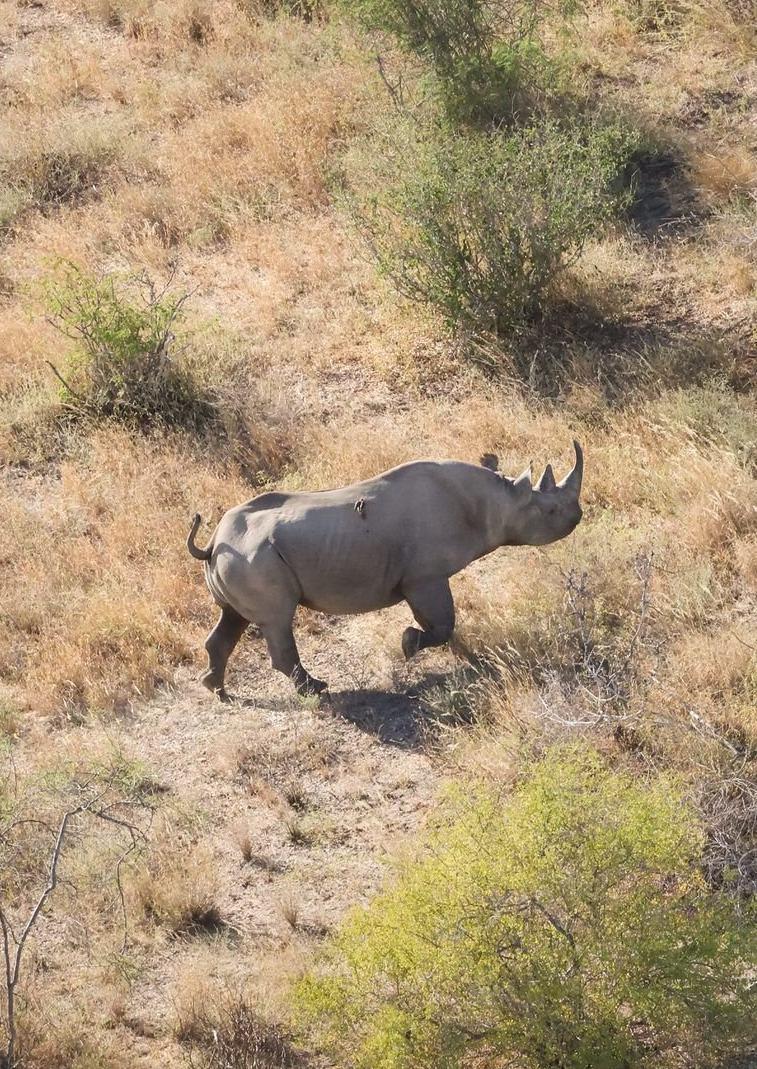

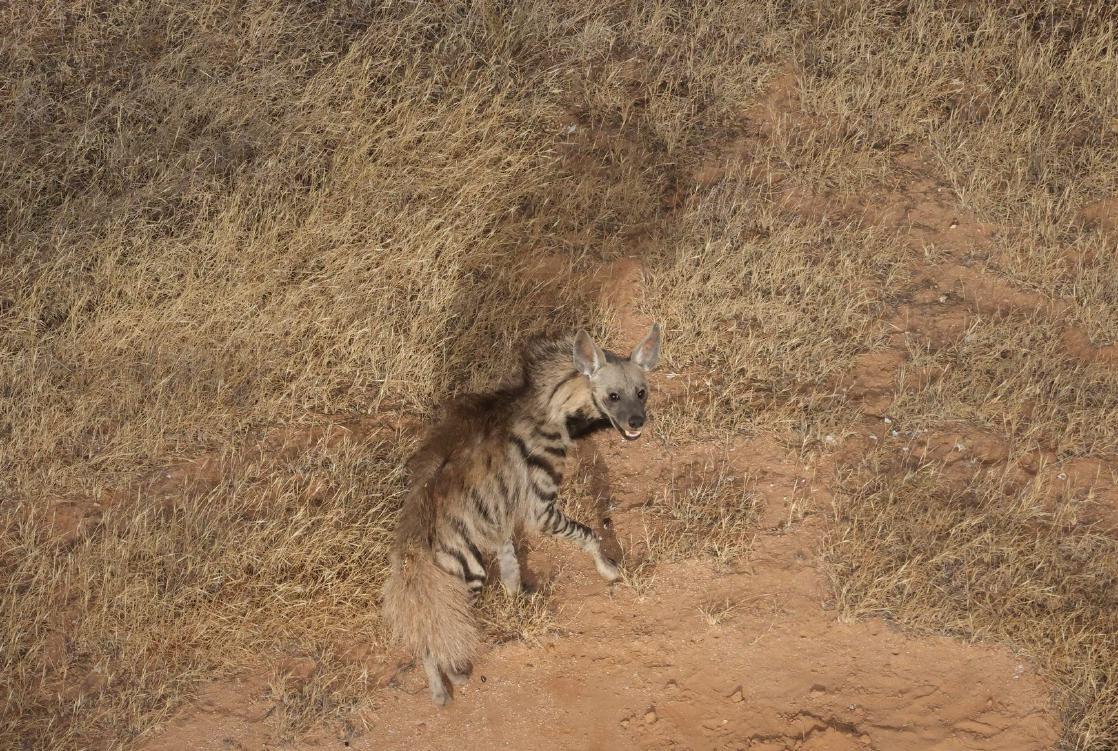




Operated in support of the Kenya Wildlife Service, Sheldrick Wildlife Trust's Aerial Unit monitors for illegal activity from the skies and offers rapid response assistance in anti-poaching operations, human-wildlife con�ict, veterinary treatments, orphan rescues, and all manner of �eld emergencies.
This report details Aerial Unit activities for June 2025
27,678
Hours �own: Areas patrolled:
206
Kilometres �own:
26,613




June saw a signi�cant number of veterinary interventions that involved aerial assistance. A total of eight elephants were treated with support from the SWT Aerial Unit, which included sighting, transferring a vet, darting from a helicopter, or some combination of the above Three of the elephants treated suffered from arrow wounds, including multiple arrow wounds on a collared elephant, possibly the victim of human-elephant con�ict after straying too close to human settlement and crops. At the moment, there is a large population of elephants (more than 500 individuals) that have migrated many kilometres out of Tsavo East and are at times moving through a patchwork of bush between scattered farms and human settlement
Two other elephants that were sighted and later treated with aerial assistance were suffering from suspected spear wounds, also likely caused by human con�ict Two more elephants were found with wounds caused by snares: a young bull elephant with a large game snare (intended for buffalo or eland) and a badly infected ankle, and another older bull that had previously been treated in January for a snare wound and was still struggling to stave off a persistent infection. All of the above are expected to make a full recovery after treatment.

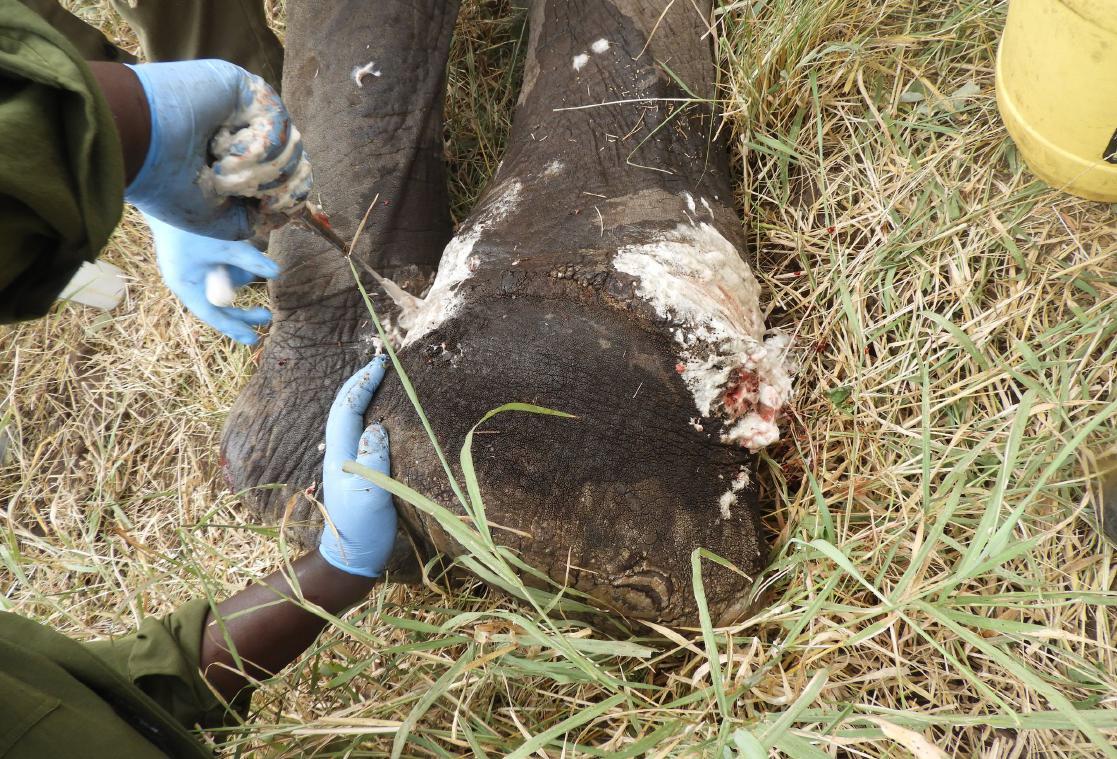
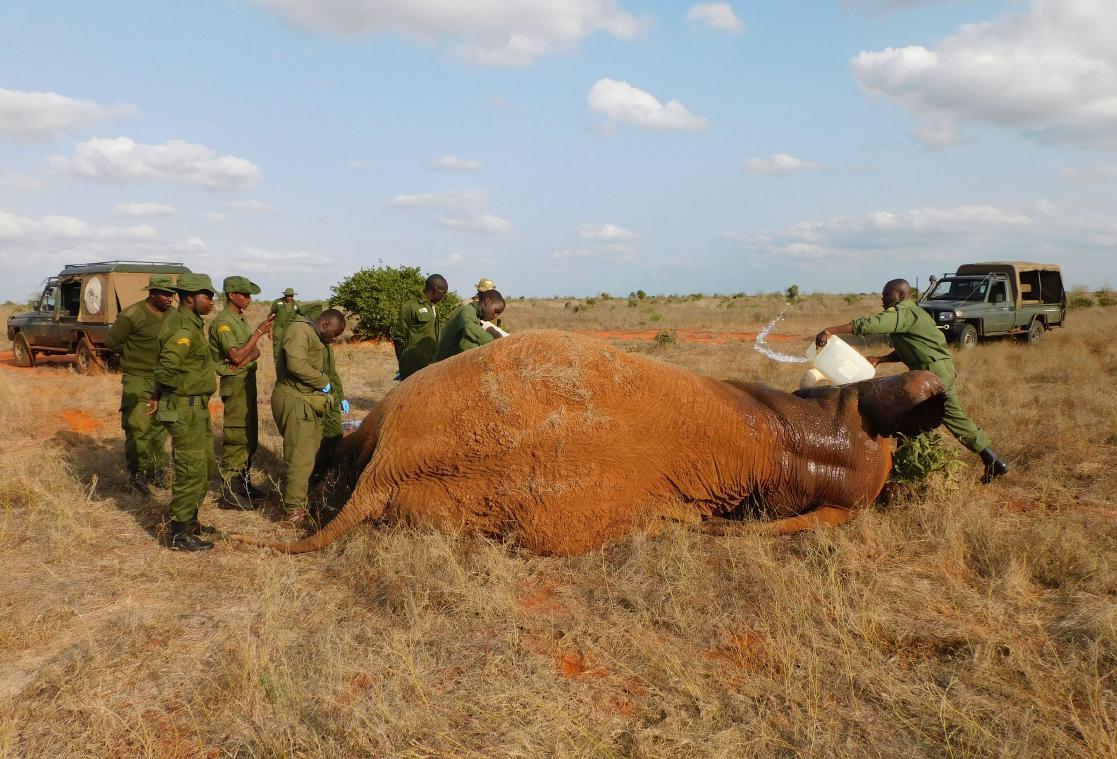
The last elephant to be attended to was a 20-year-old female with a spike in her foot, a naturally caused injury. She was �rst sighted near our Field HQ, browsing next to the airstrip. It was too late in the evening to intervene; however, she was seen again in the morning, and after collecting the vet team in a �xed-wing aircraft, she was darted from a helicopter and swiftly treated She was producing a small amount of milk and was therefore assumed to have an older calf and belong to a nearby herd. Following a successful treatment, she is expected to make a full recovery and rejoin her family before long.
Two other cases attended to with help from the Aerial Unit involved a lion and a giraffe. The lion, reported by Big Life Foundation on Mbirikani Ranch, had multiple �ghting injuries as well as a spear wound, possibly in�icted by an opportunistic herder The vet team was again collected with a �xed-wing aircraft and proceeded by helicopter to the site After locating the lion, it was darted and treated before being translocated further away from human settlement to avoid further con�ict.
The giraffe, reported by the management of LUMO Conservancy, had been in a collapsed state for over 24 hours The vet was �own to LUMO in a helicopter and quickly set to work trying to revive the animal and get it to its feet. Unfortunately, it was found to be paralysed and had to be euthanised. A subsequent post-mortem inspection revealed a blocked urethra, a full bladder, and urea particles in the urine
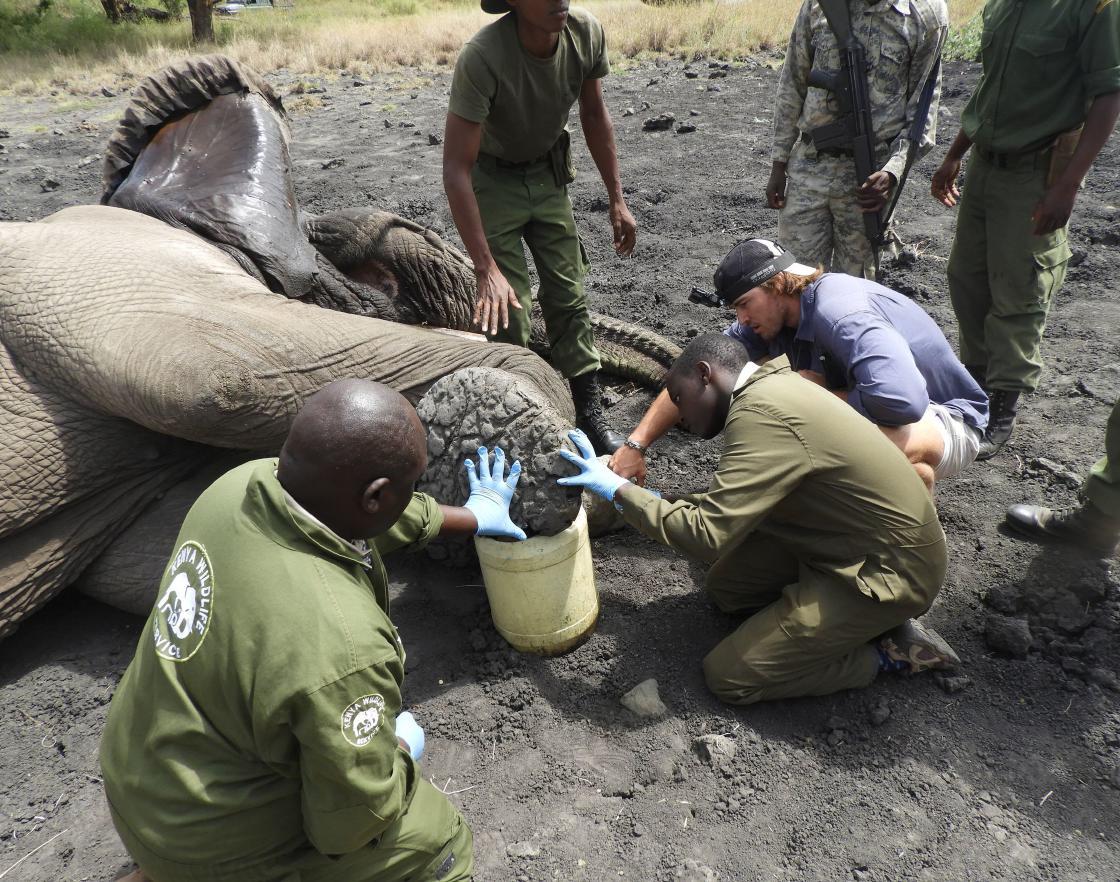
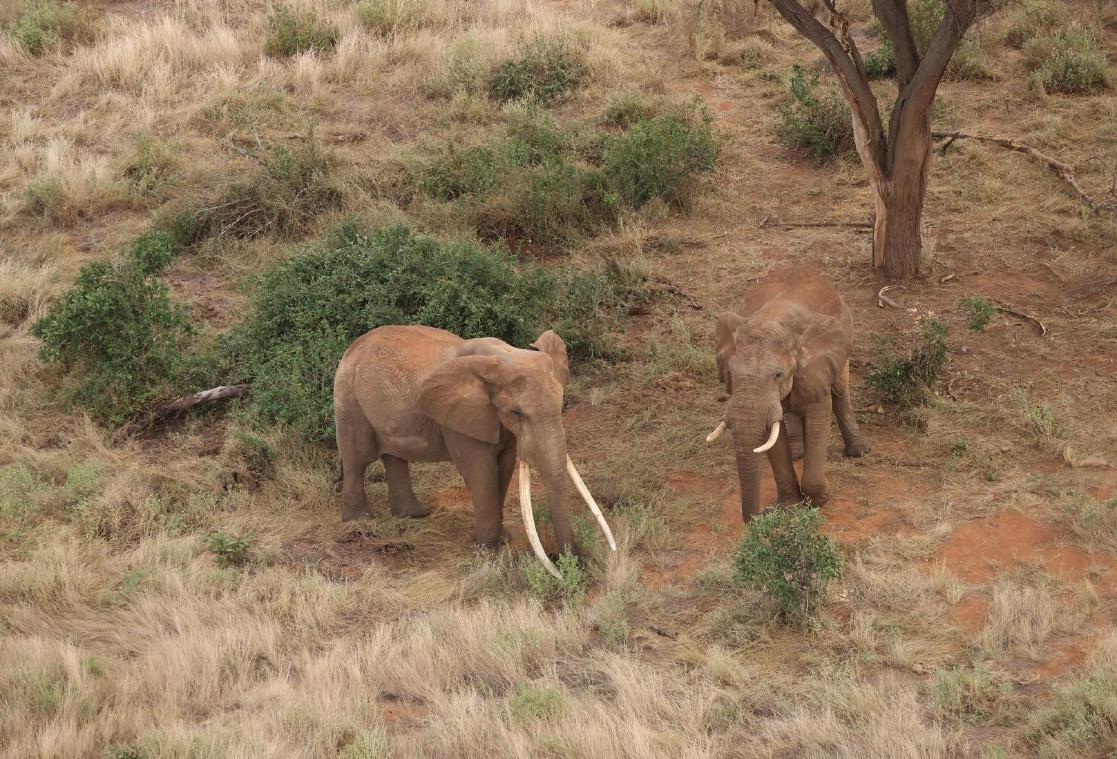

A small amount of suspected poaching activity was observed in June, including several poachers’ camps, evidence of snaring and honey harvesting, as well as fresh spoor of a poacher accompanied by fresh buffalo tracks and a blood trail, indicating lamping activity Ground teams were deployed to set ambushes at the camp and in the area where the lamping took place Several instances of illegal honey harvesting were also observed in the region
There was a reduced number of human-elephant con�ict cases reported to the team for action. Helicopters were deployed a total of �ve times to drive elephants out of settled areas and back into the park or adjacent protected areas. A helicopter was also used on one occasion to assess the status of elephants in Kili� County, where 500 elephants had taken up residence in a moderately settled area outside the park. KWS will continue monitoring the situation to seek to avoid any injury to either people or elephants
Two elephant carcasses were found during aerial patrols in June: one of a freshly poached elephant outside the park with tusks removed, and another old carcass inside the park with tusks intact and presumed to have died of natural causes
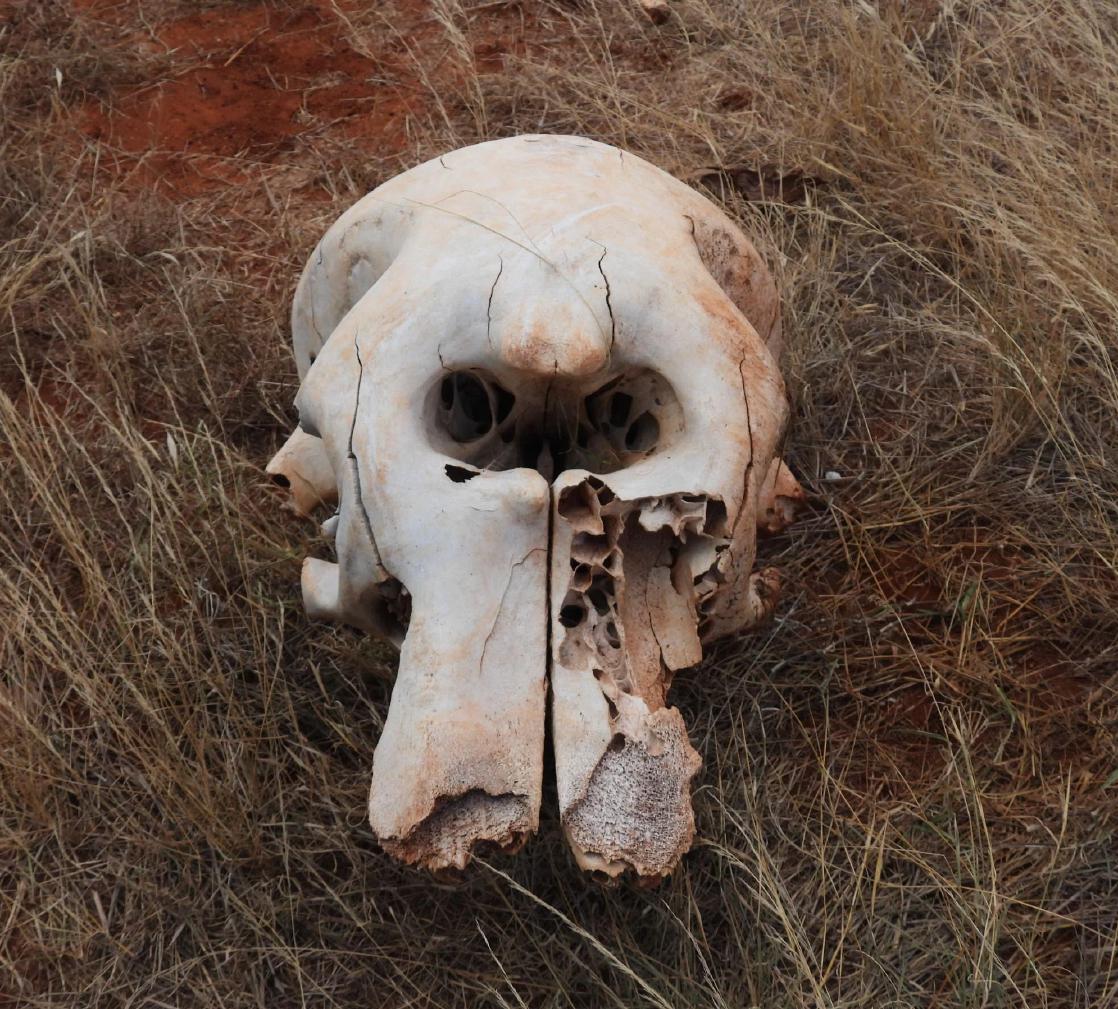
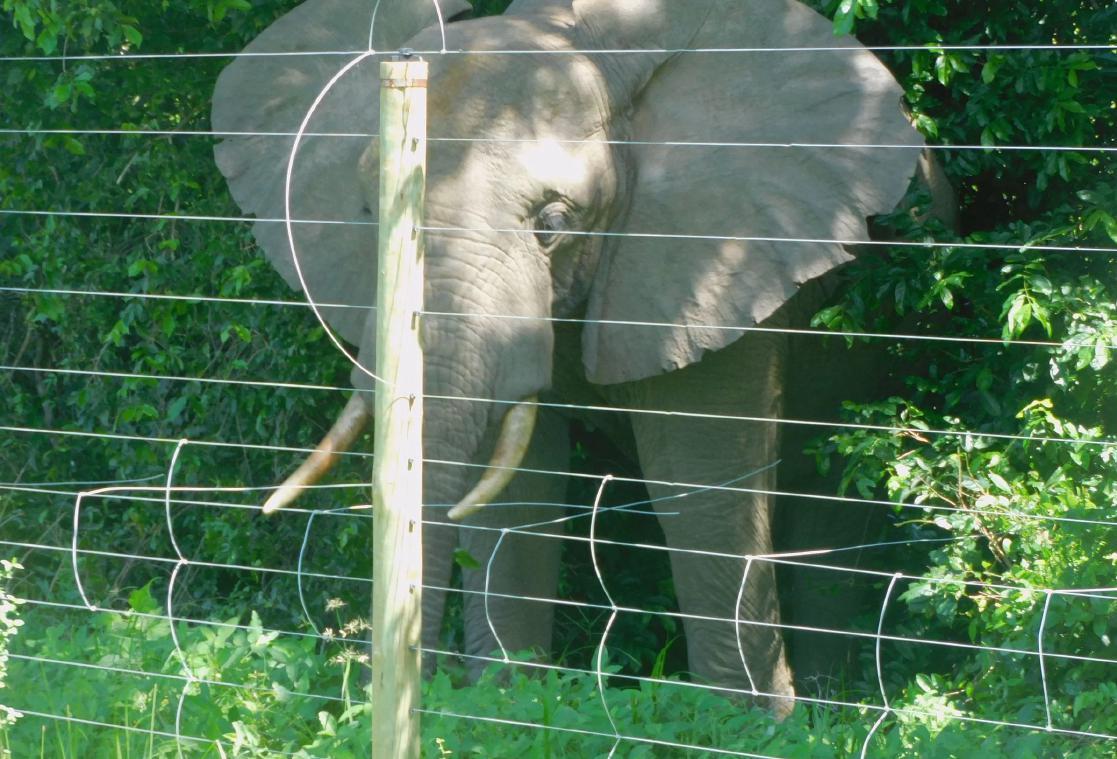
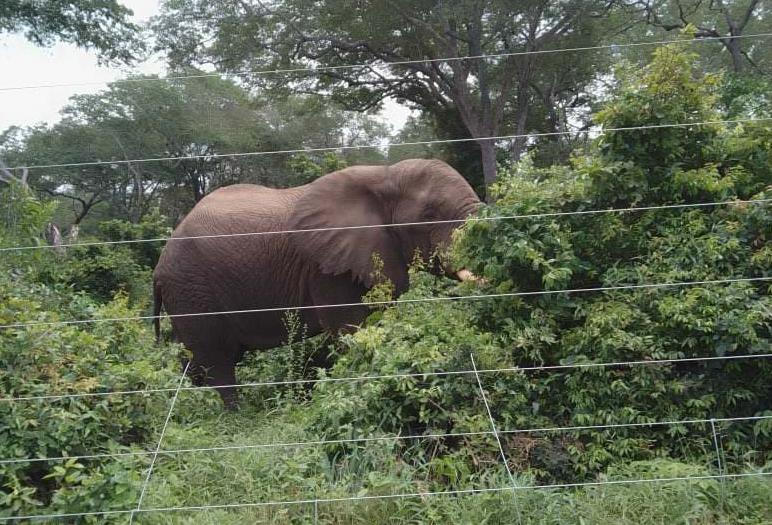
Livestock incursions into Tsavo East and West generally decreased throughout the month. We continue to conduct patrols to map invasions and pass coordinates on to KWS, who are gradually gaining greater control over even small incursions The current situation is far better than just a few years ago, when there were consistently tens of thousands of head of livestock in the parks
The result is evident in the dramatic recovery of vegetation during the same period. Huge areas that once seemed irreparable are now covered in a thick blanket of grasses and forbs This means more habitat for small rodents and other mammals, more graze and browse for large herbivores, less water runoff leading to greater water storage in the landscape, and an enormous amount of carbon sequestration.
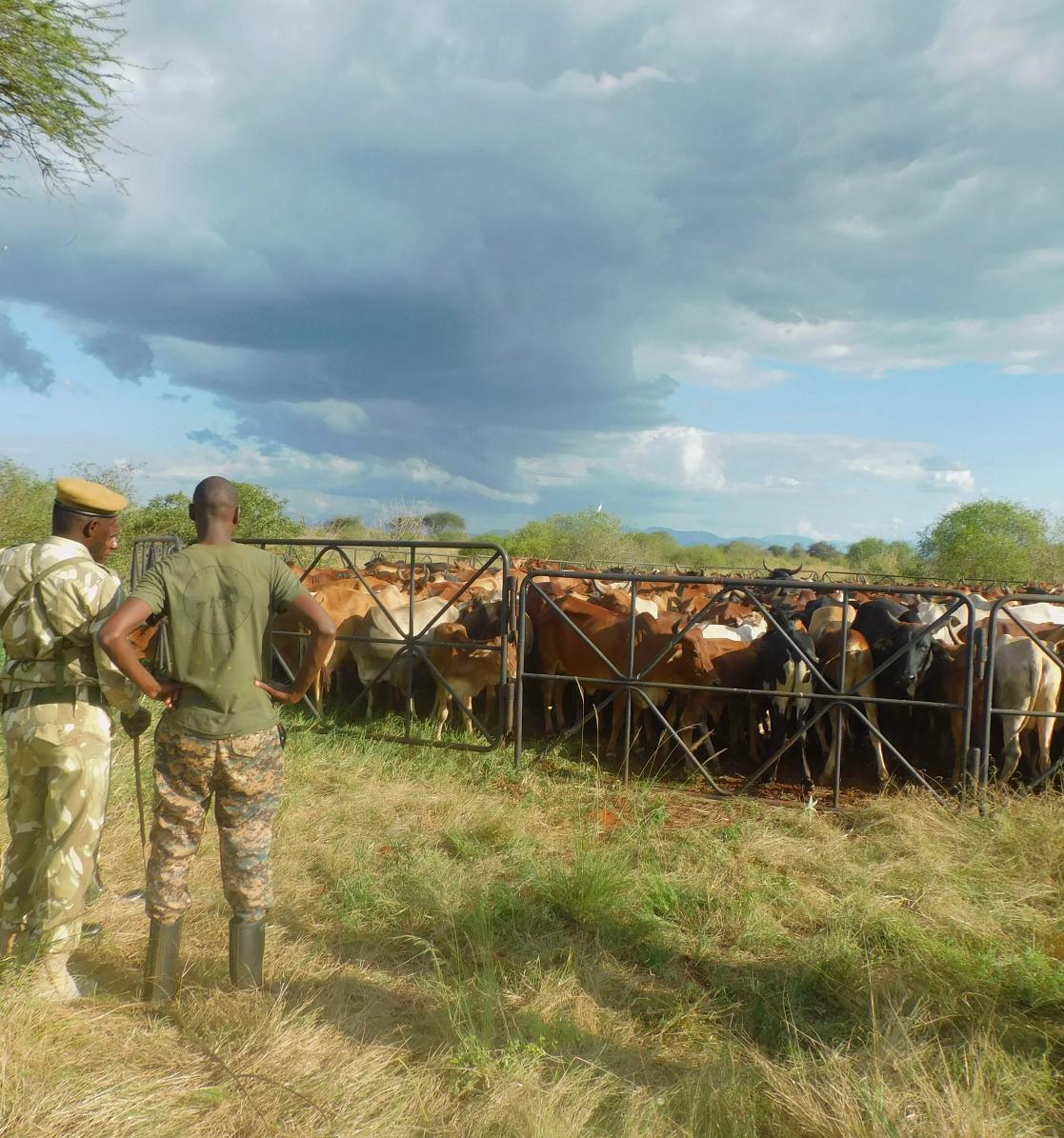


Other activities carried out by the Aerial Unit included the rescue of an orphaned buffalo calf found by a ground team in Tsavo East. Unfortunately, by the time the calf was rescued, it was already in a severely weakened state and died. One of our helicopters was also employed to assist KWS in capturing 10 gazelles that were being moved out of the fenced government irrigation scheme on Galana Ranch
Some highlights from the team included the sighting of three newborn rhino calves, �ve leopards, and a lion during a single helicopter �ight


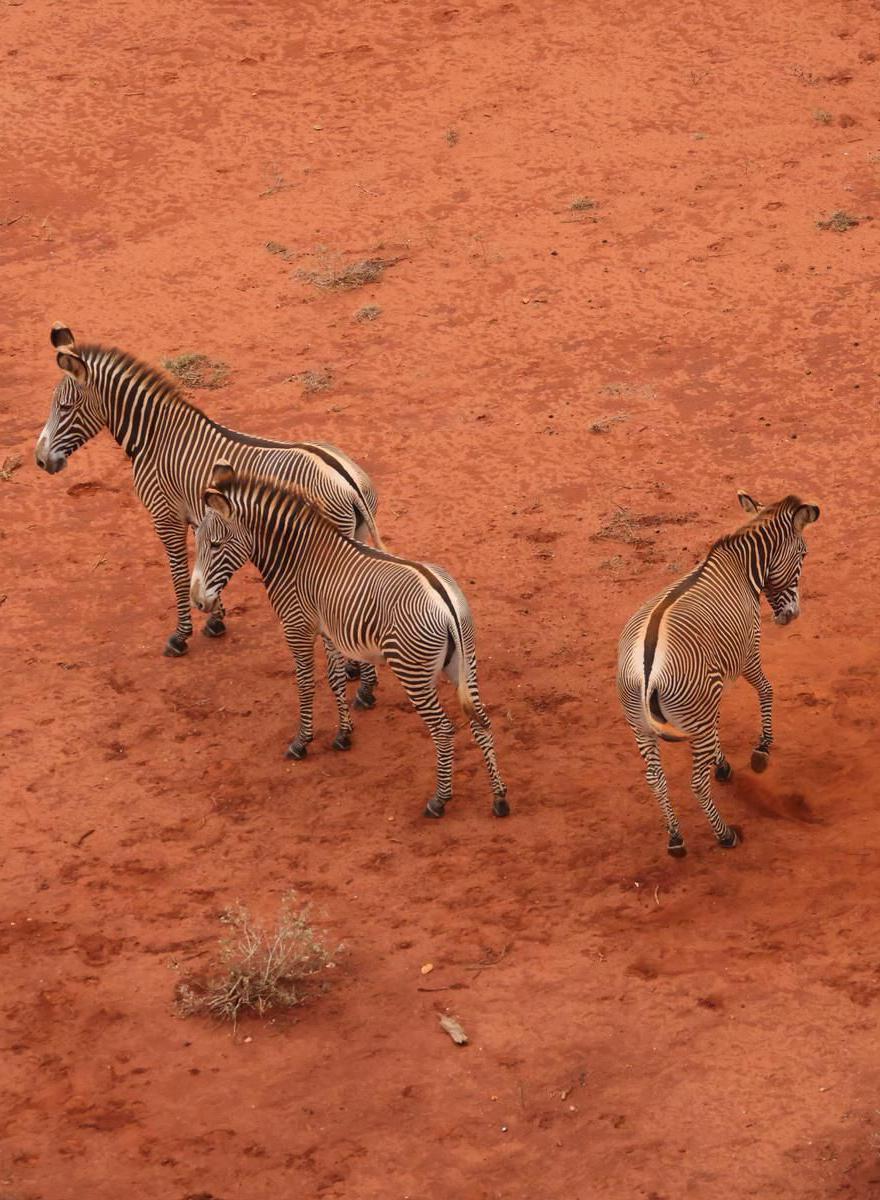


The Aerial Unit, as with all Sheldrick Wildlife Trust's conservation projects, is a donorfunded initiative Thank you to our global supporters, who help us secure Kenya's habitats for the future and make an impact in the �eld, each and every day